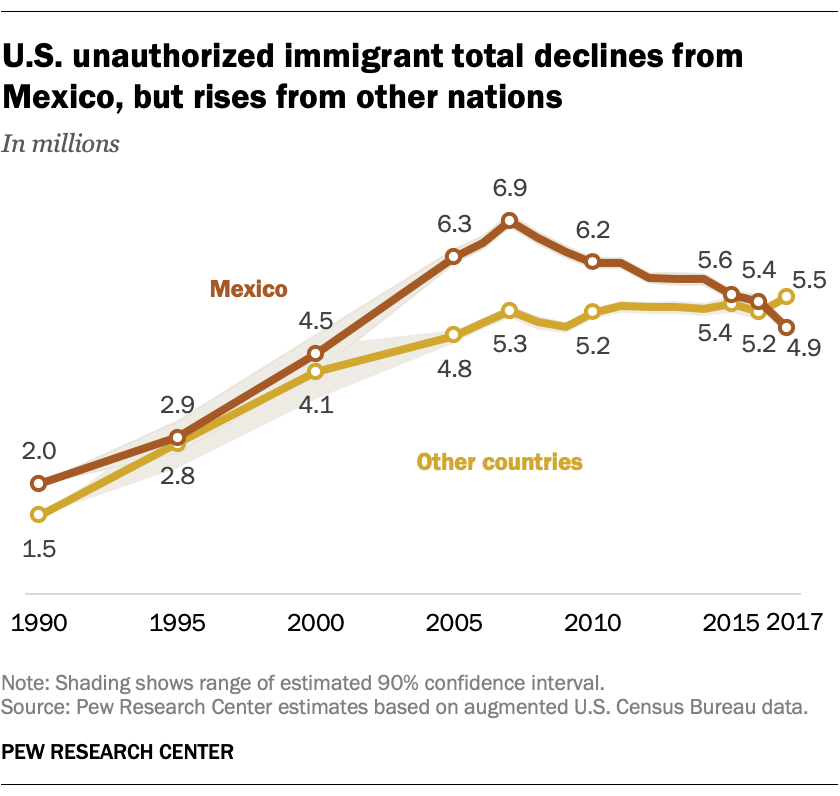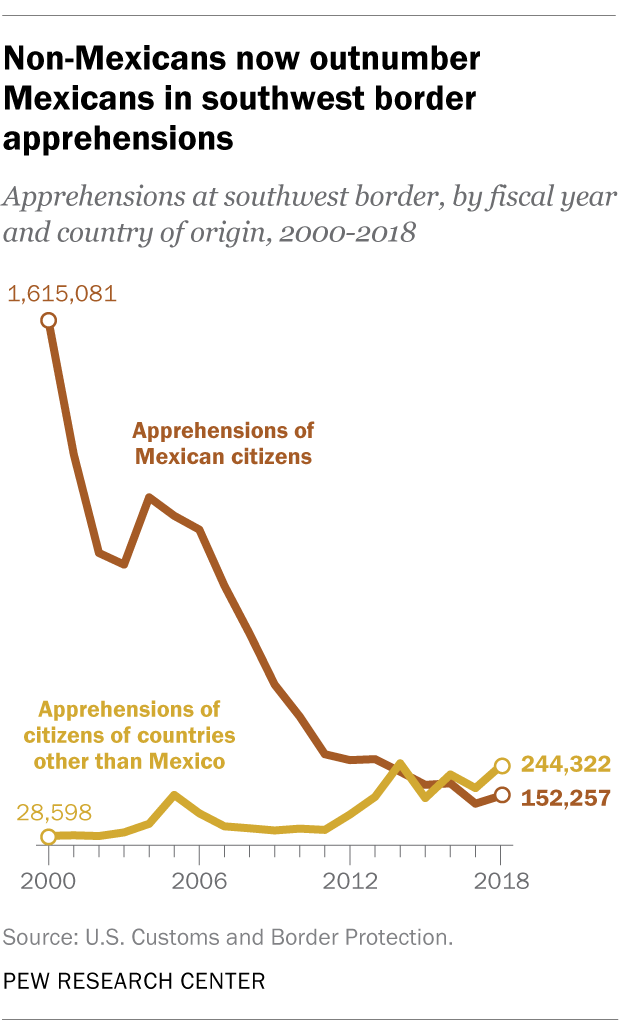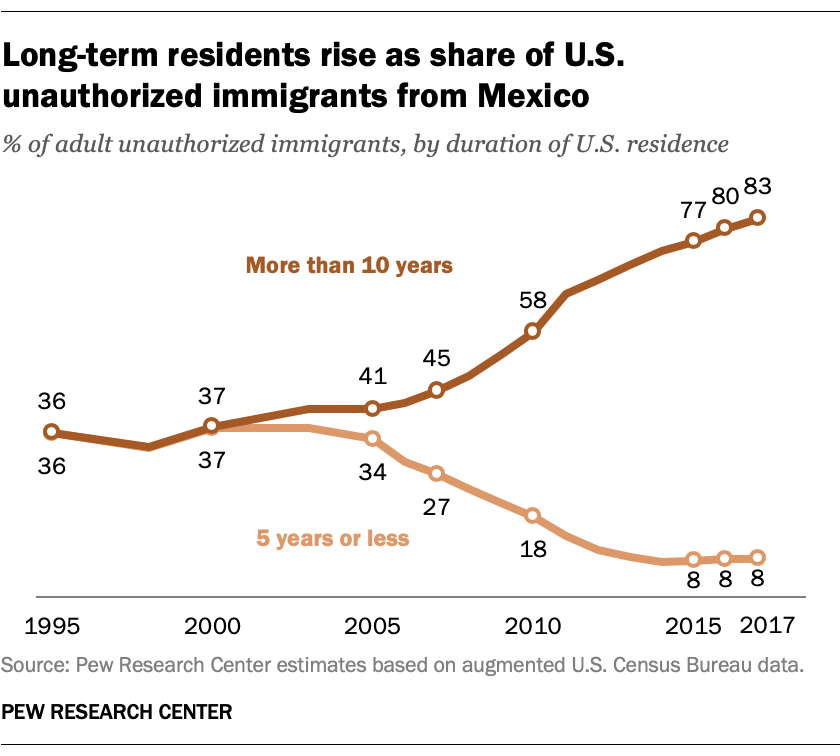There were 11.6 million immigrants from Mexico living in the United States in 2017, and fewer than half of them (43%) were in the country illegally, according to Pew Research Center estimates. Mexico is the country’s largest source of immigrants, making up 25% of all U.S. immigrants.
As President Donald Trump’s administration has taken a variety of steps to reduce the number of unauthorized immigrants in the U.S. – including through the increase of law enforcement agents at the southern border – here’s what we know about illegal immigration from Mexico.

The number of Mexican immigrants living in the U.S. illegally has declined by 2 million since 2007. In 2017, 4.9 million unauthorized immigrants from Mexico lived in the U.S., down from a peak of 6.9 million in 2007. Mexicans now make up fewer than half of the nation’s 10.5 million unauthorized immigrants (47% in 2017).

At the U.S.-Mexico border, there have been more apprehensions of non-Mexicans than Mexicans every year since fiscal 2016. Non-Mexicans accounted for 62% of apprehensions at the southwest border in fiscal 2018, marking the third consecutive year in which they outnumbered Mexicans. In fiscal 2018, which ended Sept. 30, the Border Patrol made 152,257 apprehensions of Mexicans. This is a sharp drop from a recent peak of 1.6 million apprehensions in fiscal 2000, when Mexicans accounted for 98% of apprehensions. The decline in apprehensions reflects a decrease in the number of unauthorized Mexican immigrants coming to the U.S.
Mexicans were deported from the U.S. 192,334 times in fiscal 2017, down from a recent high of 307,120 in fiscal 2013 – but up from 169,031 in fiscal 2005. The increase over the past decade occurred after a 2005 shift in policy that increased the chances of being deported following apprehension in the border region. Prior to that change, many unauthorized immigrants were returned without a formal deportation order.

Mexican unauthorized immigrant adults are more likely to be long-term residents of the U.S. As of 2017, 83% had lived in the U.S. for more than 10 years, while only 8% had been in the country for five years or less. By comparison, 51% of unauthorized immigrant adults from countries other than Mexico had lived in the U.S. a decade or more as of 2017, while 30% had lived in the U.S. for five years or less.
[callout align=”alignright”]

Try our email course on immigration
Learn about U.S. immigration through five short lessons delivered to your inbox every other day. Sign up now!
About 536,000 unauthorized immigrants from Mexico are enrolled in the Deferred Action for Childhood Arrivals program as of April 2019, which provides work permits and protection from deportation to those who meet certain requirements. Mexico is the origin country with the most active DACA recipients by far. The next highest countries are El Salvador (26,000), Guatemala (17,000) and Honduras (16,000). Trump ordered an end to DACA in September 2017, but enrollees can remain in the program while federal courts consider cases regarding its future.
Note: This post was originally published July 5, 2015 and has been updated.
Related posts:
5 facts about illegal immigration in the U.S.
Mexicans decline to less than half the U.S. unauthorized immigrant population for the first time

